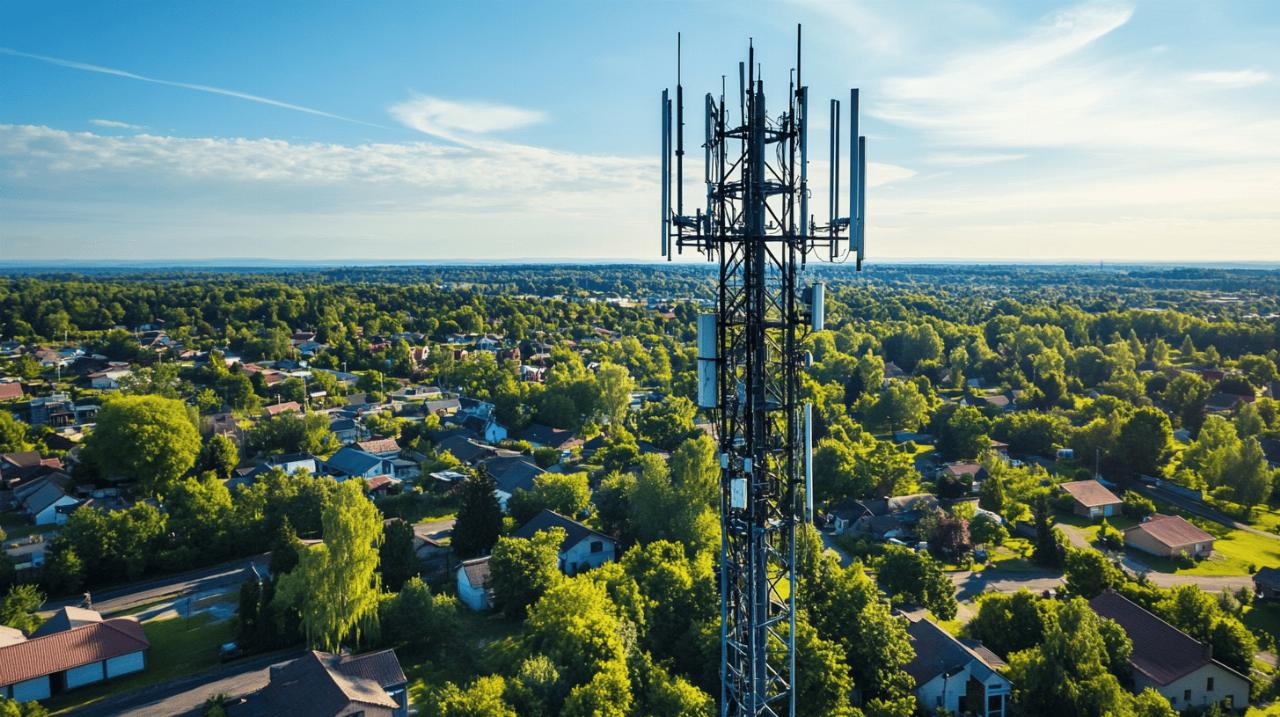Considering the prospect of hosting a mobile phone mast on your private property can open the door to a valuable income stream, yet navigating the complexities of lease agreements, rental valuations, and restoration obligations requires careful thought. The landscape for landowners has evolved significantly with the introduction of updated regulations designed to accelerate the rollout of digital infrastructure across the United Kingdom. Understanding what constitutes fair rent, the intricacies of long-term leases, and the responsibilities that come with site restoration is essential for any landowner contemplating this venture.
Understanding Planning Permission and Site Requirements for Mobile Phone Masts
Navigating the local council approval process
Before any mobile phone mast can be erected on your land, the local council must grant planning permission. This stage involves submitting detailed proposals that outline the mast's design, height, and intended location. While the network operators typically manage this process, landowners should remain informed about the steps involved. The Electronic Communications Code, which governs how telecommunications operators gain access to private property, provides a framework for both parties to follow. The planning process can sometimes be a lengthy affair, with the council scrutinising the impact on the surrounding environment, local amenities, and community concerns. Engaging with the planning authority and understanding the documentation required can help streamline approval. Although the operator will lead the charge, having a clear grasp of the process ensures you are well-prepared for any queries or objections that may arise from neighbours or local residents.
Why Location and Infrastructure Matter to Network Operators
The location of your land plays a pivotal role in determining its attractiveness to network providers. Operators such as Vodafone, EE, O2, and Three conduct extensive research to identify sites that will enhance their signal coverage and network capacity. Whether your property is a rural field, an urban rooftop, or a plot adjacent to existing infrastructure, the strategic value of the site directly influences the terms of any potential lease. Proximity to transport links, population density, and the availability of power connections are all factors that network operators weigh carefully. A site that fills a coverage gap or strengthens network resilience in a high-demand area is more likely to attract competitive offers. Understanding why your land is desirable can empower you during negotiations, allowing you to articulate the value your property brings to the operator's network expansion plans.
Negotiating Rental Income and Lease Terms with Mobile Network Providers
What Influences the Annual Rent for Your Land
The rental income you can command for hosting a mobile phone mast depends on several interconnected variables. Location remains the most influential factor, with prime sites in densely populated or underserved areas commanding higher rents. The physical characteristics of your property, such as accessibility, the size of the installation area, and the ease of maintenance access, also play a role. Market conditions and the level of competition among network providers for your site can further drive up the rent. Generally, landowners might expect annual payments ranging from a few thousand pounds to significantly higher sums for locations deemed critical to network infrastructure. However, it is important to recognise that rent valuations are often subject to negotiation and can be influenced by the terms of the lease, including duration, renewal options, and the operator's obligations for maintenance and restoration. Seeking independent advice from a land agent or valuer, often covered by the operator, can provide a clearer picture of what constitutes a fair market rate for your specific circumstances.
Securing a Proper Lease Agreement and Legal Protections
Entering into a lease agreement with a telecommunications operator is a significant legal commitment that warrants thorough professional scrutiny. Engaging a solicitor who specialises in property law and telecommunications is essential to ensure that your rights are protected and that the lease terms are balanced. The agreement should clearly define the boundaries of the leased area, the permitted use of the land, and the responsibilities of both parties regarding maintenance, insurance, and access. It is also advisable to include provisions for rent reviews, which allow for adjustments in line with market conditions and inflation over the life of the lease. Restrictive covenants and clauses addressing breach of contract, redevelopment plans, and termination procedures should be carefully drafted to avoid future disputes. A well-structured lease not only safeguards your interests but also provides clarity and predictability, reducing the risk of misunderstandings or conflicts as the relationship with the operator evolves.
Long-term lease considerations and financial expectations
Typical rental income ranges and market variables
 Long-term leases for mobile phone masts can span ten, twenty, or even thirty years, offering landowners a stable and predictable revenue stream. The financial expectations associated with these agreements vary widely based on the location, the strategic importance of the site, and the negotiating power of the landowner. In many cases, annual rents start at several thousand pounds, with exceptional sites commanding considerably more. Market variables such as the rollout of new technologies, including fifth-generation networks, and the increasing demand for reliable connectivity can influence the attractiveness of your land. Additionally, the presence of existing infrastructure or the potential for future expansion may add value to the lease. It is crucial to remember that the initial rent offered by an operator is often a starting point for negotiation rather than a fixed figure. Landowners who are well-informed about market rates and who leverage expert advice are better positioned to secure terms that reflect the true value of their property over the long term.
Long-term leases for mobile phone masts can span ten, twenty, or even thirty years, offering landowners a stable and predictable revenue stream. The financial expectations associated with these agreements vary widely based on the location, the strategic importance of the site, and the negotiating power of the landowner. In many cases, annual rents start at several thousand pounds, with exceptional sites commanding considerably more. Market variables such as the rollout of new technologies, including fifth-generation networks, and the increasing demand for reliable connectivity can influence the attractiveness of your land. Additionally, the presence of existing infrastructure or the potential for future expansion may add value to the lease. It is crucial to remember that the initial rent offered by an operator is often a starting point for negotiation rather than a fixed figure. Landowners who are well-informed about market rates and who leverage expert advice are better positioned to secure terms that reflect the true value of their property over the long term.
Negotiating with multiple interested network providers
In some cases, more than one network provider may express interest in your land, presenting an opportunity to negotiate competitive terms. When multiple operators are vying for the same site, landowners gain leverage to secure better rental income, favourable lease conditions, and additional protections. However, managing multiple negotiations requires careful coordination and a clear understanding of each operator's needs and constraints. It is advisable to work with a legal advisor who can help you compare offers, assess the risks and benefits of each proposal, and negotiate terms that align with your long-term objectives. Alternative dispute resolution mechanisms, such as mediation or arbitration, can also be useful if disagreements arise during the negotiation process. Ultimately, the goal is to reach a voluntary agreement that maximises the financial return while preserving your rights and minimising the impact on your property.
Site Restoration Responsibilities and Health and Safety Compliance
Understanding electromagnetic field regulations and public safety standards
Public concerns about the health effects of electromagnetic fields generated by mobile phone masts are common, yet it is important to recognise that the levels of exposure are strictly regulated. In the United Kingdom, telecommunications operators must adhere to rigorous health and safety standards set by regulatory authorities to ensure that emissions remain well within safe limits. These regulations are designed to protect both the public and those who work in close proximity to the equipment. Operators are required to conduct regular assessments and maintain compliance with guidelines issued by bodies such as Public Health England and the International Commission on Non-Ionizing Radiation Protection. For landowners, this means that any mast installed on your property will have been certified and monitored to meet these stringent requirements. Should you have concerns about electromagnetic field exposure, it is worth discussing these with the operator and seeking independent information from reputable sources. Understanding the regulatory framework provides reassurance that public safety is a priority and that the installation will not pose undue risks to you, your family, or your neighbours.
Site restoration obligations when the lease ends
One of the critical aspects of any long-term lease for a mobile phone mast is the obligation for site restoration once the agreement terminates. Network operators are typically required to remove all equipment, dismantle the mast, and restore the land to its original condition, or as close to it as reasonably practicable. This responsibility is enshrined in the lease agreement and is enforceable under the Electronic Communications Code. Landowners should ensure that the lease clearly specifies the scope of restoration work, the timeline for completion, and the standards to which the land must be returned. Provisions for compensation in the event of delays or inadequate restoration should also be included. It is worth noting that terminating a Code agreement requires at least eighteen months' notice and an adequate reason, such as breach of contract or the landowner's intention to redevelop the site. Once notice has been given and the lease expires, the operator must act promptly to remove equipment and fulfil their restoration obligations. Engaging with a solicitor experienced in telecommunications law can help you navigate this process, ensuring that your property is returned to you in good order and that any disputes are resolved efficiently.




